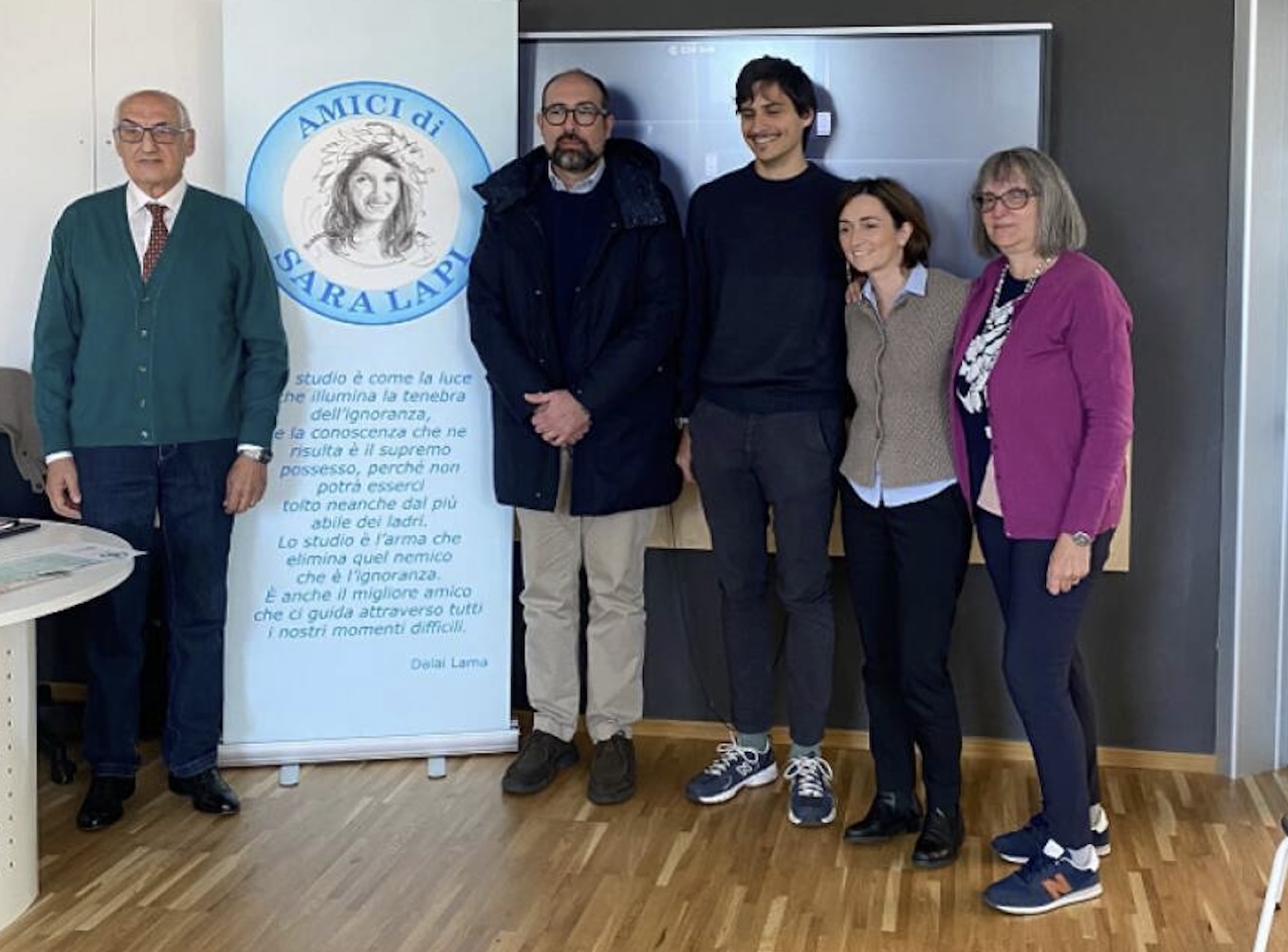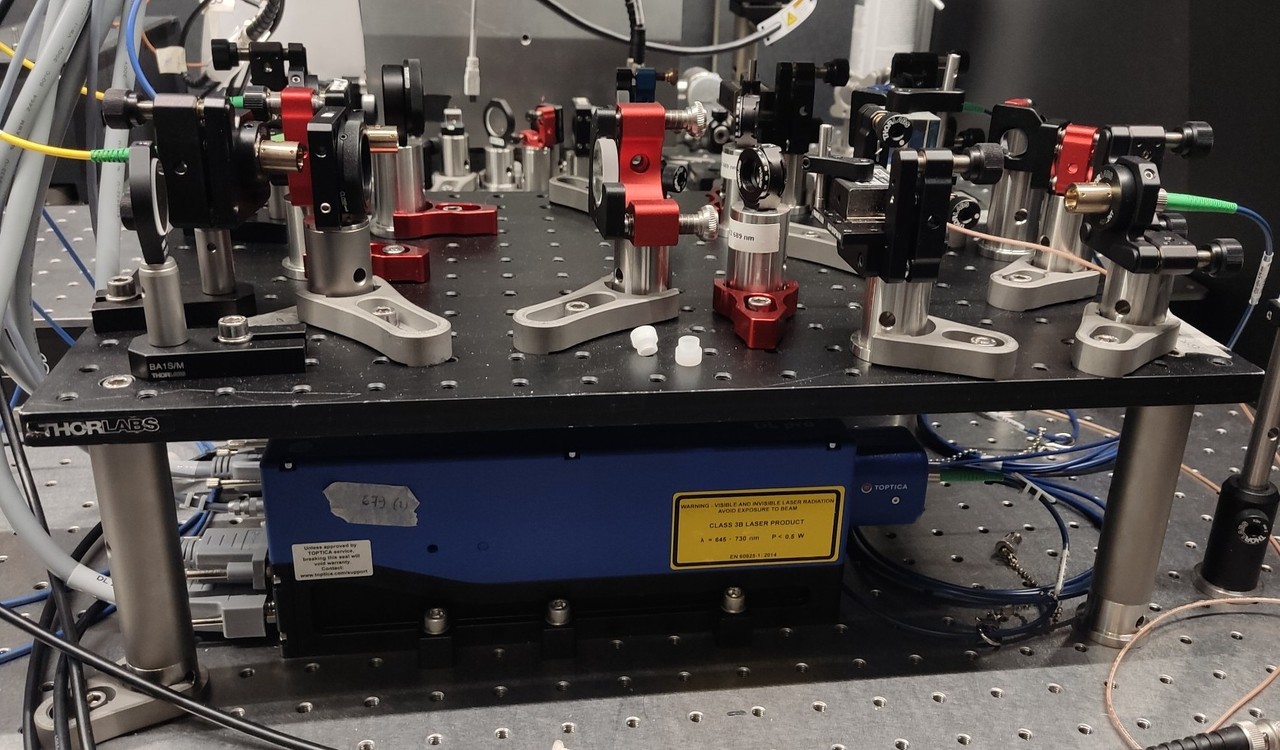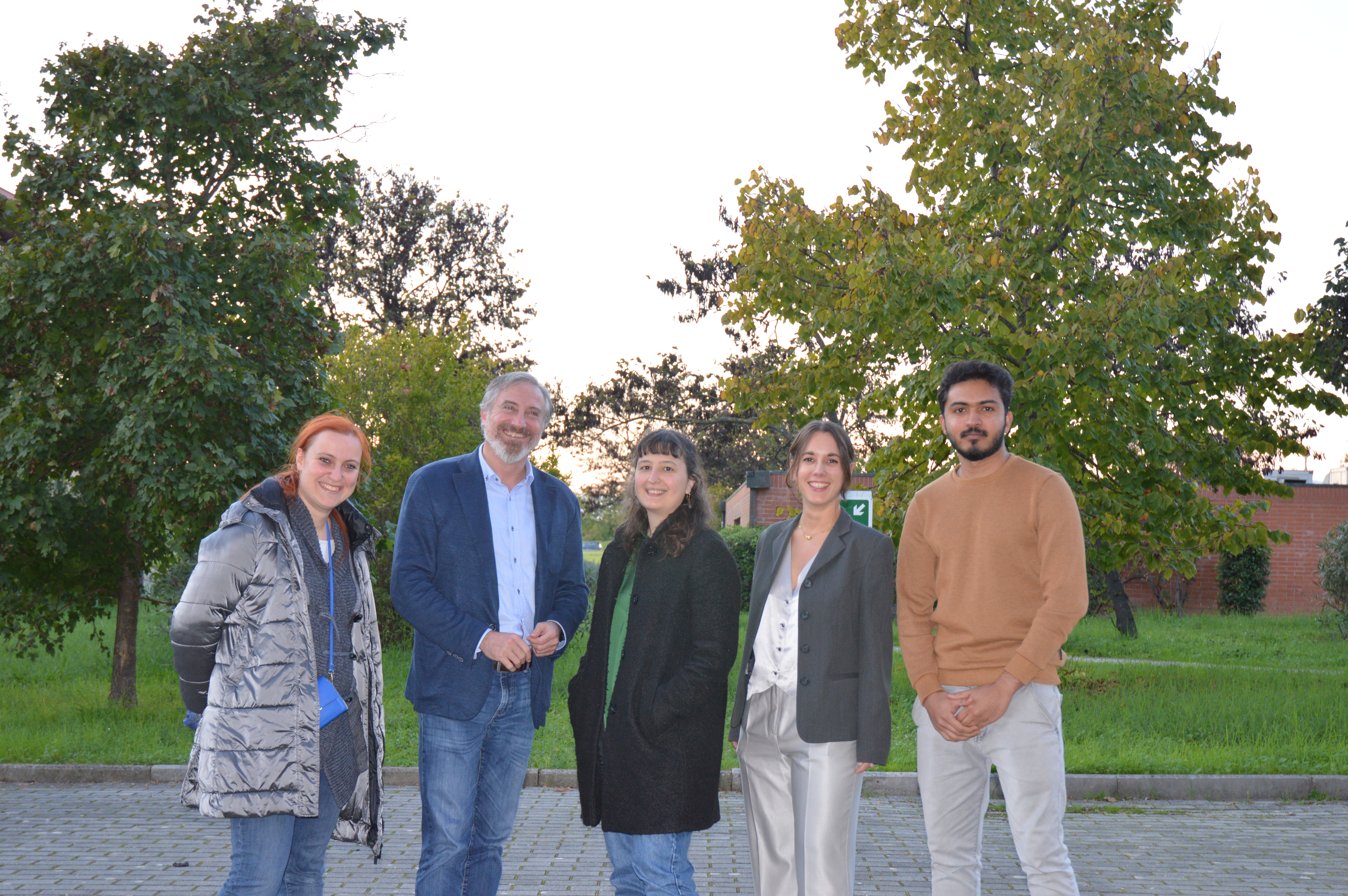 |
The Hall effect is a cornerstone of modern science, spanning applications from cutting-edge technologies to the discovery of exotic topological phases of matter. In solid-state systems, it manifests as a voltage perpendicular to current flow in a magnetic field, giving rise to transverse Hall resistance. Yet, its behavior in quantum systems remains elusive. Using neutral-atom quantum simulators, we introduce the first direct measurement of Hall voltage and resistance in a non-electron-based system. This work links quantum simulations to real-world experiments, unlocking new avenues to explore the Hall effect in tunable, strongly correlated systems. T.-W. Zhou et al. |
LAST NEWS
 |
Since 2015, the Friends of Sara Lapi Association has established a Degree Award named after Sara in collaboration with the University of Florence and in particular with the "Ugo Schiff" Department of Chemistry at the Scientific Center of Sesto Fiorentino. This year's award goes to Niccolò Preti for his thesis "Towards dipolar quantum gases in a ring". Well done! more info |
 |
We’ve successfully integrated the 679nm and 707nm lasers into our experiment. They improve the blue and red mot stages by closing two decay channels, leading to a factor of 10 increase in density that is helpful to move forward with our optical tweezers. Stay tuned for the next update! |
 |
We are immensely proud of Ludovica Donati, who successfully defended her PhD thesis, “Generating quantum coherence with incoherent radiation”. Her research deals with the production of Fano coherence in atomic systems induced by interactions with incoherent radiation, paving the way for the first detection of such phenomena on this platform. This achievement marks an important milestone in her academic career and we look forward to her future contributions to the scientific community. Congratulations, Dr. Donati! . See also the thesis here |
 |
In this ambitious EIC Transition project we aim at developing the laser of our dreams: narrow and stable everytime you push the ON button. The project is a joint effort between the Ba+/Li group and the companies SILENTSYS, IDIL and A8. They will help us turn our ideas into a real product. We are looking for motivated people to join us, contact us for open positions! |
